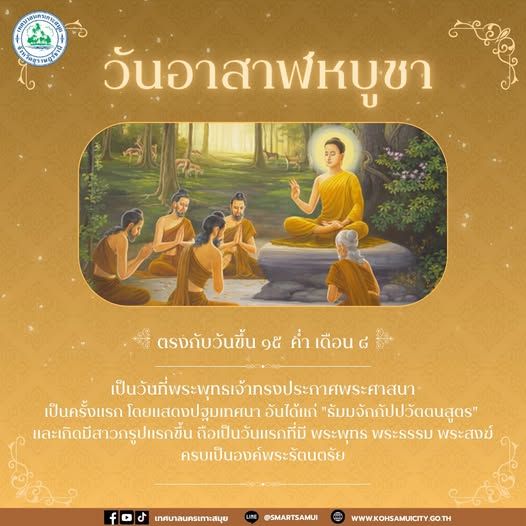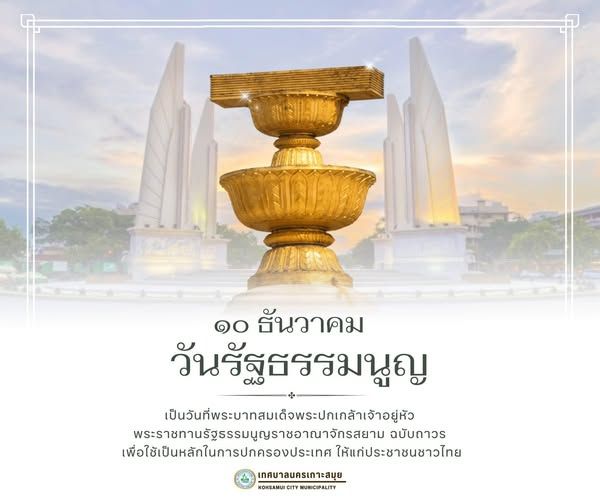Celebrate Asalha Puja Day, a significant Buddhist holiday marking the Buddha’s first sermon and the beginning of the Triple Gem. This profound day of wisdom and community is celebrated across Asia, especially in Thailand!
AsalhaPuja #Buddhism #BuddhistHoliday #TripleGem #Dhamma #Buddha #Sangha #Thailand #Sarnath #DeerPark #SpiritualJourney #Wisdom #Community #AsiaTravel #CulturalHeritage
Asalha Puja Day, observed on the full moon of the eighth lunar month, is a prominent Buddhist holiday celebrated in several countries across Asia, especially in Thailand, Myanmar, Laos, Cambodia, and Sri Lanka. The term “Asalha” refers to the eighth month in the traditional lunar calendar, while “Puja” means worship or homage. This day marks a vital event in Buddhist history and plays an essential role in the religious calendar.
Historical Background
Asalha Puja Day commemorates the moment when the Buddha delivered his first sermon, known as the “Dhammacakkappavattana Sutta” or “Setting the Wheel of Dhamma in Motion.” This sermon was given to five ascetics at Deer Park in Sarnath, India. It is regarded as the event that set the foundation for the Buddhist teachings and the start of the Sangha, the community of monks. On this day, the first disciple attained enlightenment, marking the completion of the Triple Gem: the Buddha (the Enlightened One), the Dhamma (the teachings), and the Sangha (the monastic community).
The Triple Gem and Its Importance
The Triple Gem—Buddha, Dhamma, and Sangha—is central to Buddhist faith and practice. Asalha Puja Day is deeply significant because it represents the establishment of this trinity. Followers reaffirm their faith in the Triple Gem during ceremonies and rituals, emphasizing the interconnectedness of the teacher, the teachings, and the community.
Rituals and Observances
On Asalha Puja Day, Buddhists participate in various religious activities. Temples become the center of community life, where devotees:
- Offer food and alms to monks
- Listen to sermons and teachings recalling the Buddha’s first discourse
- Engage in meditation and chanting
- Make offerings of candles, incense, and flowers
- Observe the Five Precepts or undertake more rigorous practices as an act of devotion
In some countries, candlelight processions are held around temples, symbolizing the spread of the Buddha’s teachings and the illumination of wisdom.
Asalha Puja and the Beginning of Buddhist Lent
Asalha Puja also signals the approach of the Buddhist Lent, known as “Vassa.” Vassa is a three-month period during the rainy season where monks remain in their monasteries to meditate, study, and teach. The day after Asalha Puja, followers celebrate “Khao Phansa,” the official start of this retreat, making this holiday a precursor to a period of intensified spiritual practice.
Regional Variations and Customs
While the core elements of Asalha Puja are shared throughout the Buddhist world, local customs and practices can vary. In Thailand, the holiday is a public affair, with processions, festivals, and special decorations at temples and in homes. In Sri Lanka, it is known as “Esala Poya” and is marked by processions and acts of generosity, such as giving to the needy and releasing captive animals as a sign of compassion.
The Modern Relevance of Asalha Puja Day
Today, Asalha Puja Day continues to inspire millions of Buddhists to reflect on the Buddha’s teachings and renew their commitment to the path of wisdom and compassion. The holiday serves as a reminder of the core values of Buddhism: understanding suffering, practicing ethical conduct, and fostering community.
Frequently Asked Questions
FAQ: Asalha Puja Day
What is Asalha Puja Day and why is it significant in Buddhism?
Asalha Puja Day marks the occasion when the Buddha delivered his first sermon, known as the Dhammacakkappavattana Sutta, which set the foundation for Buddhist teachings. This day also signifies the establishment of the Triple Gem—Buddha, Dhamma (the teachings), and Sangha (the community)—making it a cornerstone event in the Buddhist calendar celebrated widely across Asia.
How do Buddhists observe Asalha Puja Day?
Buddhists celebrate Asalha Puja Day by gathering at temples to offer food and alms to monks, listen to sermons recounting the Buddha’s first discourse, meditate, chant, and make offerings such as candles, incense, and flowers. Many also observe the Five Precepts or undertake stricter practices, and in some regions, candlelight processions are held to symbolize the spread of wisdom.
What is the connection between Asalha Puja Day and Buddhist Lent (Vassa)?
Asalha Puja Day precedes the start of Buddhist Lent, known as Vassa. The day after Asalha Puja, followers observe “Khao Phansa,” marking the beginning of a three-month retreat for monks to meditate and study within their monasteries. This period is a time for intensified spiritual practice and marks a significant phase in the Buddhist year.




